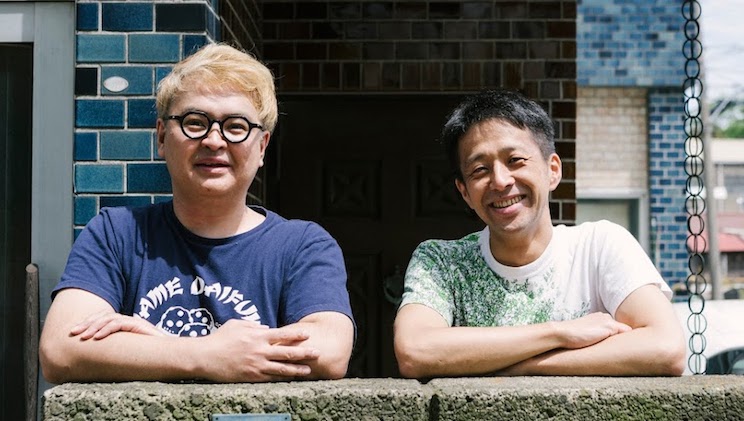The City is the Ultimate Field for Use of IP: The Nihonbashi of the Future, as “Chizaizukan” Envision It.
The City is the Ultimate Field for Use of IP: The Nihonbashi of the Future, as “Chizaizukan” Envision It.

Konel - a creative company with offices in the Bakuro-Yokoyama neighborhood of Nihonbashi – launched a new company under the name “Chizaizukan” (or “IP Encyclopedia”) this January. (See here for our article on Konel) With operating “an intellectual property (IP) database in order to generate new business” as their primary focus, the company brings a creator’s perspective to the world of IP, which we tend to think of as having high barriers for entry. Chizaizukan also focuses its energy on expanding the avenues for use of valuable IP. For this issue, we spoke with Mr. Ryo Arai – Representative Director, COO, and Chief Editor at Chizaizukan – and Mr. Yasuhiro Ogino, their Technical Director, regarding how they perceive cities as “the focal ‘spaces’ for IP usage” and their unique initiatives.
IP doesn’t just want to be protected; it wants to be used.
-First, please tell us about your pasts.
Ryo Arai (“Arai”): I worked at a design firm in web media editing and online streaming of real-world events. I joined Konel last year, launched the “Chizaizukan” website, and the project became a company in January this year. I originally majored in a liberal arts field, and I’m not really suited for the natural sciences or engineering. So it can be a struggle figuring out all the research references and patent notices, but it does feel like operating Chizaizukan as a media presence leverages my editorial experience a bit.

Mr. Ryo Arai, chief editor of “Chizaizukan”
Mr. Yasuhiro Ogino (“Ogino”): I was originally a school of sciences major, and went independent as a freelancer for five or six years after some time working at a startup post-graduation. I co-founded Konel over that period, and I currently manage production technology areas as an engineer and technical director, such as web production, system development, installation, AI, robotics and so on.
-Were you always deeply involved in IP?
Ogino: I think I actually had interacted with a fair amount of IP, but I wasn’t really aware of it as such. To put it briefly, IP doesn’t just refer to patented technology and inventions. Text, fonts, lyrics, and so forth are also types of IP. We try to handle IP in the broad sense, and it feels like the streets are overflowing with IP when you think of it like that.

Mr. Yasuhiro Ogino, technical director for “Chizaizukan”
-Could you tell us more about what “Chizaizukan” does?
Arai: Chizaizukan is media that “connects people and IP with no prior common ground to promote new business, via easy-to-understand IP introductions.” We’ve showcased more than 100 IPs at present. We primarily handle those media operations and consulting with companies that own IP.
When we hear “intellectual property” (IP), I feel like most people tend to think of patent, research, and other rigid concepts. Also, IP tends to have a “protective” character no matter what, and a character as a sort of “capture the flag” character where you create an inaccessible zone by getting a patent. But the Patent Act of Japan actually says it’s for the “protection and usage” of IP. At present, only protection is emphasized and usage is restricted, and that’s not the way things should be. On that front, I wanted to create Chizaizukan as a media presence that would make IP more open while still protecting inventor rights, allowing people to think of wide-ranging applications.
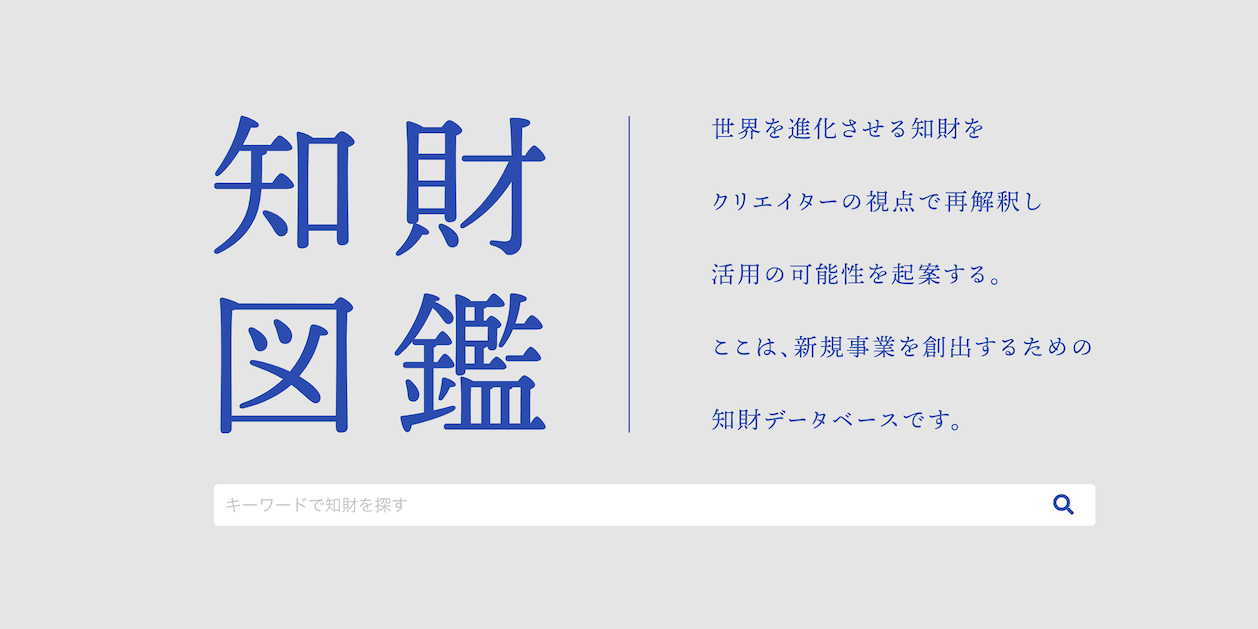
The “Chizaizukan” website (Image provided by: Chizaizukan)
Ogino: People often ask me what IP is, and I think that since it’s called intellectual “property,” it means something with financial value – in other words, something useful for society that stimulates the economy. But there’s a lot of IP that just lies dormant, not generating any value with people just paying the patent fees.
Arai: There really is. Major companies in particular hold a lot of IP called a “dormant patent” that isn’t used despite their ownership. I want Chizaizukan to provide “the next step” for transforming that kind of IP into concrete value. I want to offer potential applications for IP that’s awaiting an opportunity for use, in ways that suit social issues and current trends.
The key to IP usage is conversion to media for exposure to numerous viewers.
-What actually motivated you to launch “Chizaizukan”?
Ogino: Panasonic once asked me to “develop something with us using our technology” at an exhibition for the 100th anniversary of their founding, themed on “illustrating our next century.” The technology was a touchscreen that could recognize who touched it, and they had originally envisioned applications for a “whack-a-mole” game. Whack-a-mole might have been suitable for testing its functions, but I felt like it was a waste for such an intriguing IP. So internally, someone brought up the idea of a variety of other applications that would utilize it more fully.
As everyone brought up ideas, I realized that you might be able to create a sort of “conference table of the future” if you combined this touchscreen with a voice analysis service technology another company held. That technology would project image data that was relevant to the conversation onto a screen, automatically. We ended up collaborating and used the two technologies to make something called a “Transparent Table.” It’s a table-type display you have conferences around. It displays images that are relevant to the conversation, and participants can touch ones they like to save them. When the conference is over, you have your own set of image minutes. Thinking back on it now, I think that development experience made me aware of IP as IP, and inspired me to understand the importance of “expanding the breadth of IP usage.”

The “Transparent Table” is a conference table that combined Panasonic technologies with the Transparent API, an AI that displays images according to the audio present (Image provided by: Konel)
Ogino: Chizaizukan was a spin-off from a creative company in Konel, and even before its creation, and our team always consulted a lot on what might be fun to do with a specific technology, from the technological assessment stage onward. We also built a lot of prototypes that way. When other companies would consult with us on similar projects, I started to really become aware of how it was all valuable “IP” for those respective companies. It gave me a sense that every company was looking far and wide for ideas of how to use the IP it had developed. So I thought it might produce more intriguing ideas for use to provide unique IP we had interacted with, instead of just thinking about it ourselves.
-You gained a framework for seeing the things you had always been doing as IP, and that led to the idea for “Chizaizukan,” then?
Arai: Exactly. Other creative companies also have lots of teams working in production using cutting-edge technology, but there might not be too many cases of companies placing IP at the forefront as an angle, and converting IP to media.
Ogino: As an engineer, I hope for the open source movement to gradually gain ground in both the IP and engineering industries. Among engineers, it’s natural to use something another person made – like an API or GitHub - to build something better and more efficiently. Above all, rights are more strongly involved when it comes to IP, so we may not be able to go purely open-source, but I want something close to that in structural terms.
A single “blueprint for the future” instead of a massive plan.
-You have an “Imagination Project” on the Chizaizukan website. What sort of initiative is that?
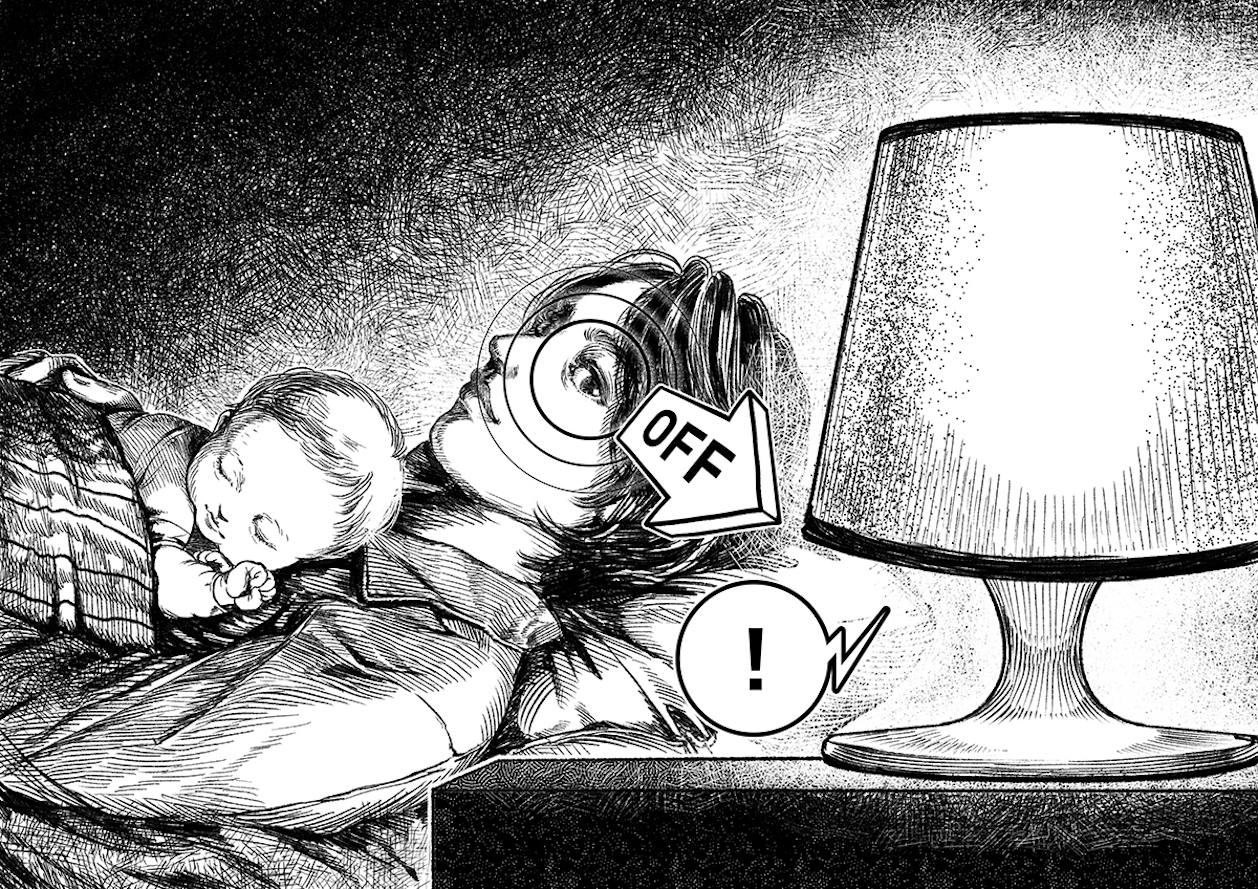
An example from the “Imagination Project” (link available). An illustration of an “eye remote” capable of turning on a light with a look, imagined when considering applications for gaze-detection IP (Image provided by: Chizaizukan)
Arai: The “Imagination Project” involves freely imagining the sort of future that use of an IP could produce, and expressing it with a simple note and single illustration. Its aims are creation of unexpected collaboration and technological combinations from distinct sectors. It’s ultimately just imagining, so we don’t do much strict feasibility study work; we’re a bit careless (laughter) in that we imagine that a type of future would be nice, and a key point is that we back-cast from society a bit in the future.
Ogino: The Imagination Project came to be a reality when NTT showed us research using optical illusions. They consulted with us on what they could do with optical illusion technology, and one of our team members had the idea for “three-dimensional drawings.” When we proposed that concept they imagined with a short title and single illustration, it developed into an official development order, and then production of the “MIRO” device. Apparently the visual proposal felt fresh to the researchers, as opposed to a lengthy planning document. This experience of having an illustration go directly into production was part of what inspired the “Imagination Project.”

The “MIRO” device uses optical illusion effects to make drawings on a compact projector appear three-dimensional
Arai: Researches are focused on technical development, so it might be hard for them to produce ideas outside of that lane. Our lack of bias in that sense lets us think of ideas freely without placing limits on them after just hearing the concept for the technology, and I think that’s why we’re able to add value.
-How do you imagine these things, specifically?
Ogino: First I envision my own life, then I work to add a future perspective into that life. In that regard, the avenues for inspiration can increase in scope when you have all sorts of people collecting IP information, regardless of field. I’d like to try a game of “imagination grand prix” where everyone competes for the most intriguing concept.
The city as a place to nurture IP.
-The “Chizaizukan” office is located in Nihonbashi; how do you view “the city” as a field for using IP?
Arai: I think the city is a place for all sorts of encounters. I’ve been working remotely due to the novel coronavirus, and was reminded of how cities activate all five senses with the people, things, ideas, sounds, smells, and so on when I went out for the first time in a while. And I think that cities are fascinating because we can expect a reaction to that sort of activation from all those diverse people in groups of unknown sizes. For example, there’s an IP called “TOU” that replicates swaying in the wind, but for walls. Only people involved with it can lay hands on it currently, and nobody knows how ordinary people would respond to it or what situations it might be useful in, at this stage. So I want to try installing things like that in the city as a way to activate the senses, and see what sort of responses they get.
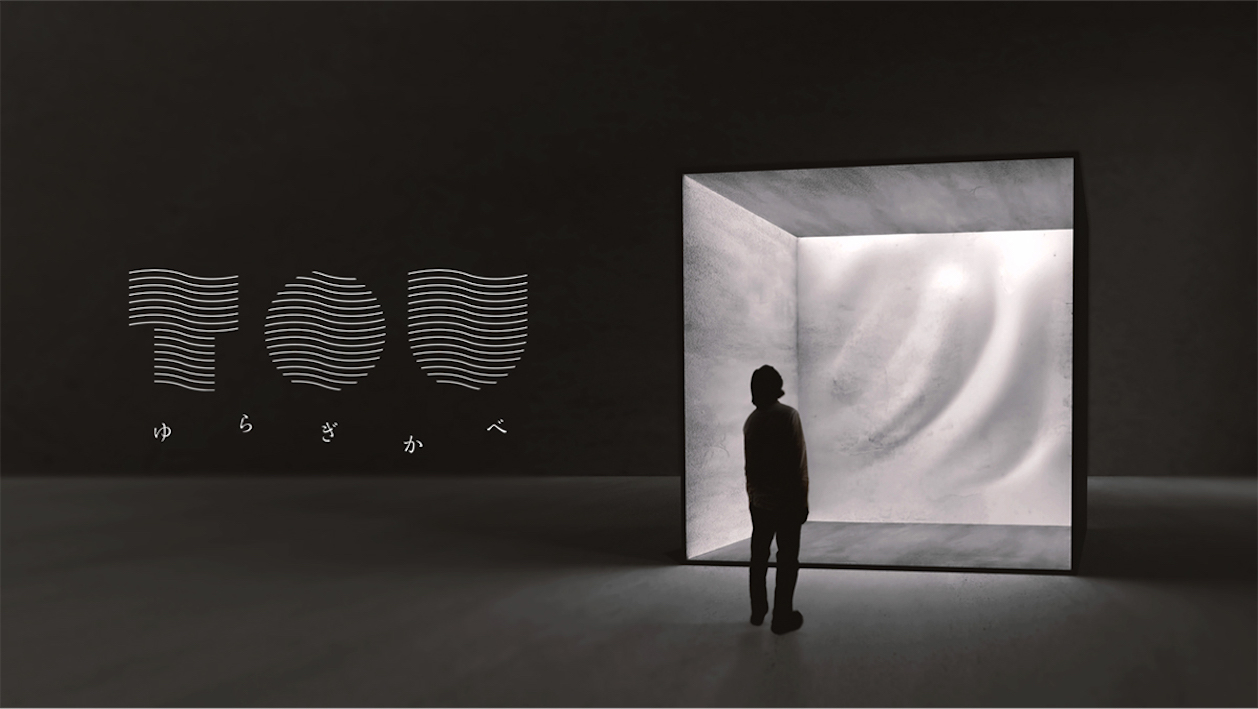
“TOU” causes entire walls to wave in response to wind on exterior walls (Image provided by: Konel)
-So you want to create a point where people in the city encounter IP, and get feedback that way?
Ogino: In the sense of creating common ground for contact with the city and people, IP seems to have an intimate relationship with local character and culture, so I think it could be interesting to make an “IP map” of a city. For example, the city of Toyota probably has a lot of automotive IP, and Bakuro-Yokoyama where we are probably has a lot of clothing-related IP given its nature as a wholesale district. It might be conceivable to bring IP into the visual spectrum and make it into a city’s brand.
Arai: It does sound interesting to get the city involved in a sort of “IP tourism” to places where they can see specific IPs. Like how the city of Tsukuba in Ibaraki Prefecture is putting energy into publicity through its IP as a science city, lately, I think IP could serve as a tourism resource.
Ogino: Right. I went to Shenzhen in China last year, and the city itself felt like an exhibition for advanced technology. It made me realize that how you show IP really is important.
The “Imagination Project,” growing in the city of Nihonbashi.
-What sort of IP would you like to put to use with Nihonbashi as your setting?
Arai: Well, for example, I’ve tried imagining “an invisible Shuto Expressway.” That idea involves making the highway look like what’s behind it using an IP known as retroreflective materials, literally making it seem transparent as such. There are plans to put the highway underground, instead of over the Nihonbashi bridge, but I think you could cultivate excitement for it in the city if you let people envision the landscape without the highway before then.
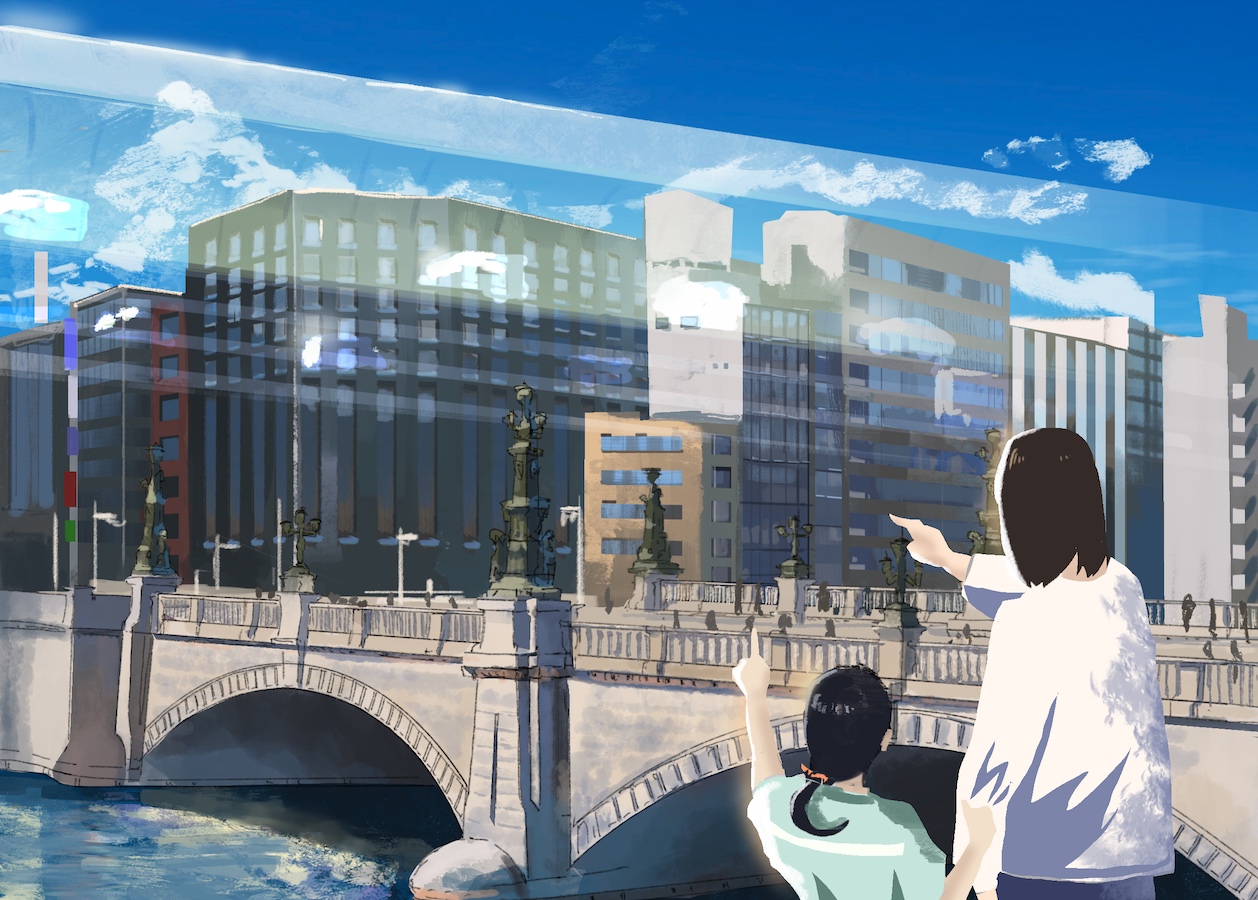
The “invisible Shuto Expressway,” imagined based on the retroreflective material IP (Image provided by: Konel)
Arai: There’s also the imagined installation [Tokaido: Ultra-Long Distance Virtual Walk] that uses the “endless corridor” IP for unbroken walking with AR technology, even in a cramped space. I think it would be great to show something like that where you could encounter the IP spontaneously, like in an open area or facility of some sort. There are music festivals and art events all over the city all the time, so it could be fun to run into IP in a natural way throughout the city, too.
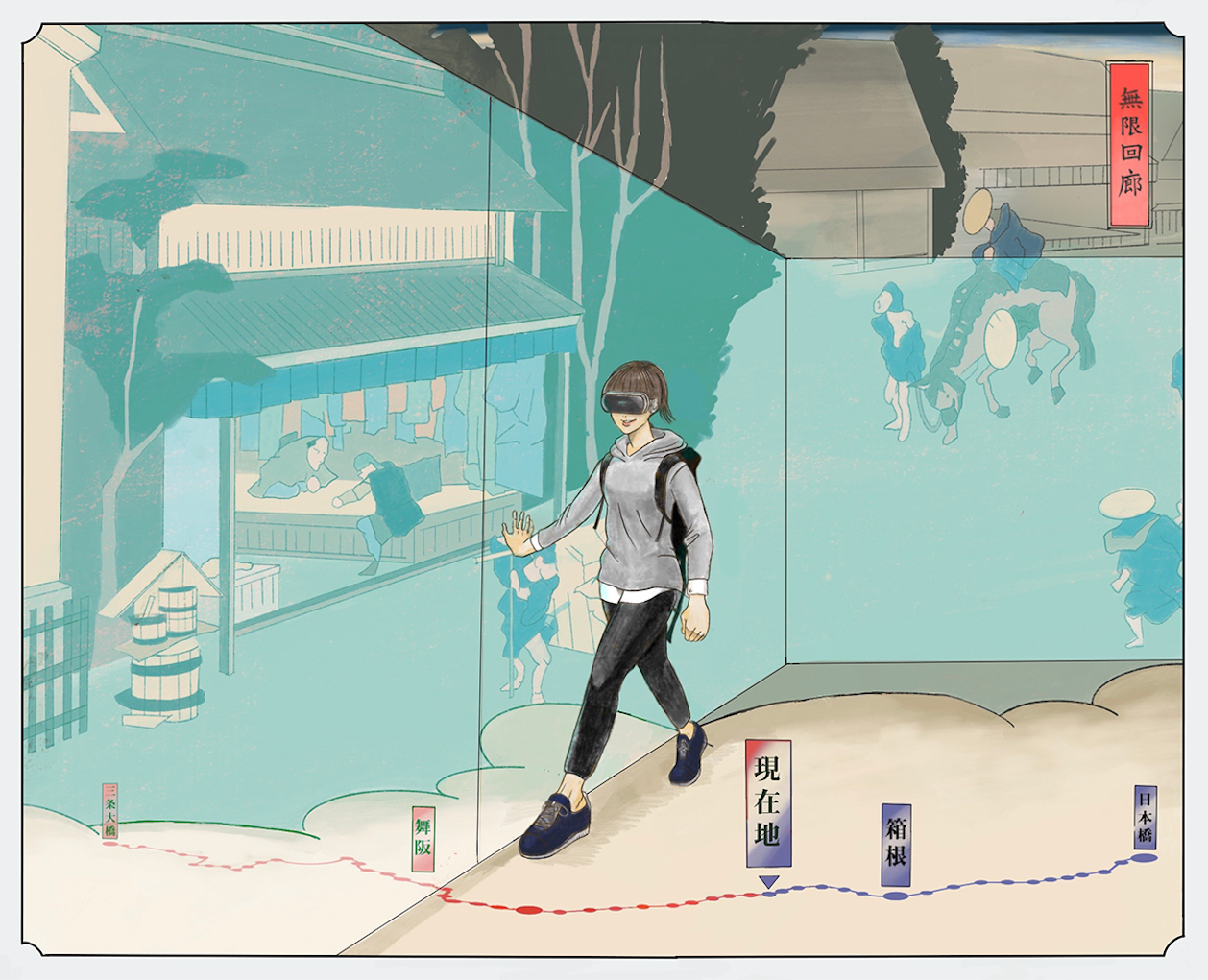
The “Tokaido: Ultra-Long Distance Virtual Walk” concept, imagined based on the “endless corridor” IP (Image provided by: Konel)
Ogino: Speaking of running into IP in a natural way, we also imagined an idea for [Digital Offertory Boxes That Fade Into the Background] and let you make offerings via QR and digital technology, without marring the scenery. There are other technologies that let you make digital offerings, but digital devices tend to be organic no matter what you do, and they don’t fit in well with older things. But the “InfoWall” technology has information come up out of the interior of a wooden offertory box, and hides the information when not in use, so it passes as an ordinary offertory box from any perspective. Our thoughts on using a combination of modern IP and objects with history to make progress for both led us to imagine using this for offertory boxes. In that sense, Nihonbashi’s attitude of “safeguarding history while new currents are created constantly” feels like it fits very well with our initiatives at Chizaizukan.
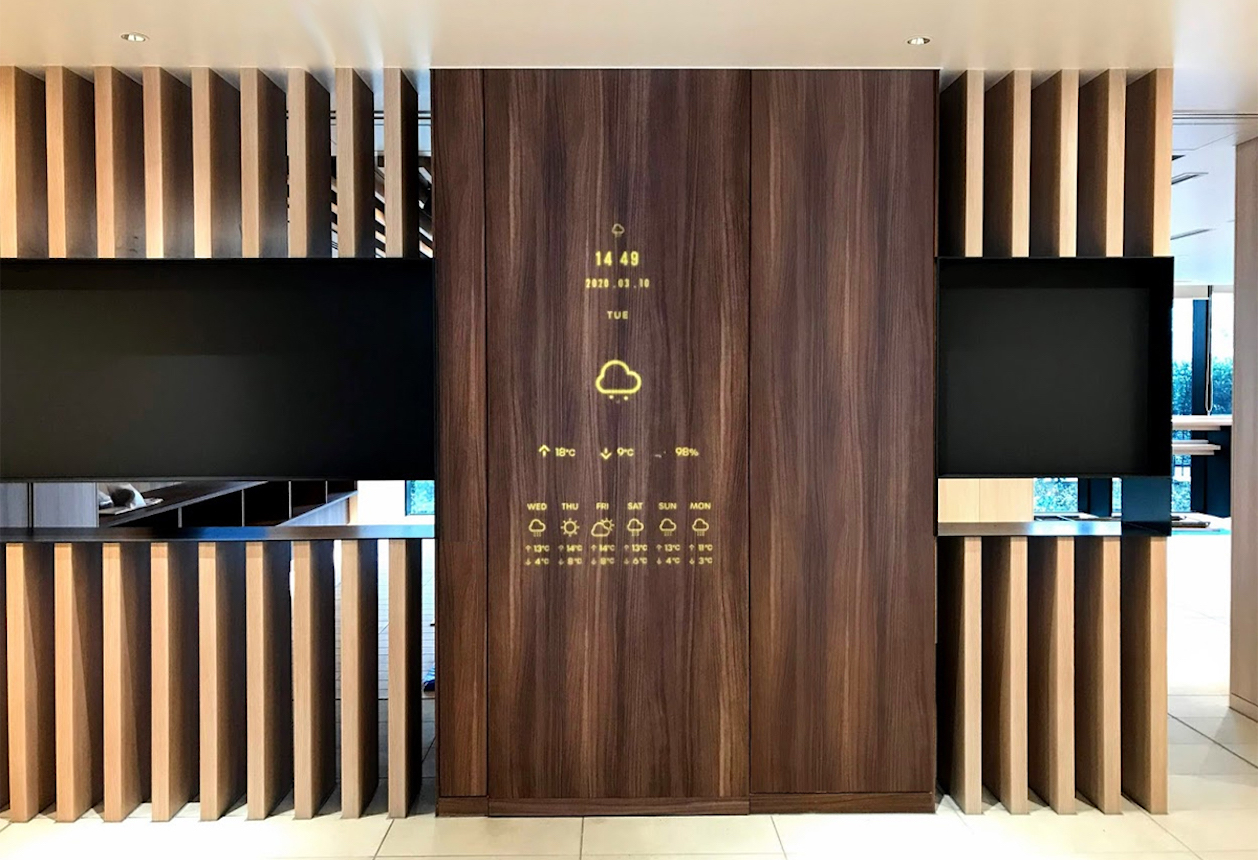
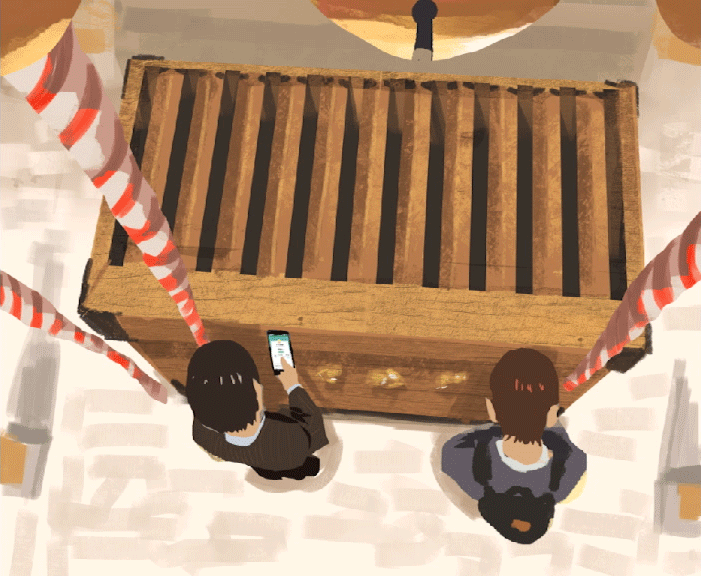
An image of an “InfoWall,” and the “digital offertory box” designed using the same IP to blend into a background and display QR codes for offerings from within its materials (Image provided by: Konel)
-Do you think that it’s more rewarding to make updates to a city using IP if it has history, like Nihonbashi?
Ogino: I do think so. Nihonbashi is nice because it feels livable while still being located in the city center. I mentioned a bit ago that imaginary ideas for IP don’t grow unless they’re closely tied to our personal lives, and I think it would be hard to come up with useful ideas for a real city if Chizaizukan were located in an inorganic city with faceless rows of skyscrapers.
-What sort of impact do you think it would have for the city and its people to experience these “imaginations”?
Arai: I think that one person’s imagination can spark someone else’s. People who respond to the IP used in a city come up with other applications, and those become services and products, so ideas should connect to each other. Inversely, there are also cases when the city gives us issues to solve, as a direction. It could provide ideas for proposals for using IP to resolve issues that bother us.
Ogino: The other day, I had a group discussion about how to update buttons with the staff of a long-standing button company at a meeting of local business operators. It was fun, and there were a lot of ideas for IoT-type buttons, like ones that talk or light up. Creating a place to discuss ideas for buttons as an issue among ourselves had a lot of value in itself, I’d say.

-Finally, is there anyone you’d like to collaborate with in the future?
Ogino: There are two for me, and the first is that I’d like to work with a non-digital company. This was also true of the button anecdote from earlier, but I’d like to work with wholesalers and artisans in entirely unrelated fields and discover IP in areas we don’t know at all. And the other is the public sector. Even if you want to add flavor to the entire city with IP, one company can’t get it done on its own. So I’d love to get the cooperation of the municipality itself.
Arai: Since cities are the ultimate venue for IP installations, I’d like to work with someone who provides physical spaces to embed IP into. It seems like creating something like a “Nihonbashi Expo” special district would expand the city’s potential enormously. It could be an area for advanced technologies, packed with our ideals for 10 years in the future. I think that if the entire city is sprinkled with IP and imagination, the ideas will gradually grow over time and become sparks for new businesses and experiences.
Interview and text: Minako Ushida (Konel) Photography: Daisuke Okamura
Chizaizukan Inc.
A creative team that operates the “Chizaizukan” database, proposing simple explanations, reinterpretations, and potential uses for amazing IP from a creator’s perspective. In addition to publicizing IP via media, the company also works in a wide range of fields including IP usage plan consulting, product and service development, business and IP matching, mediation, and reporting on, planning, and operating technology-related events.
